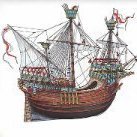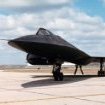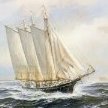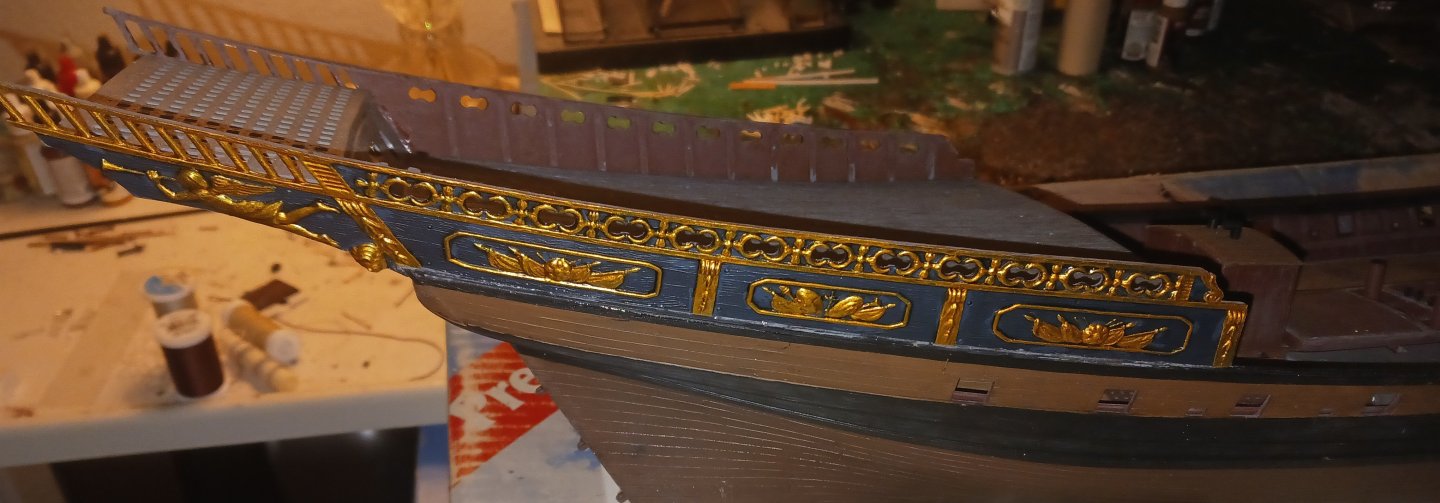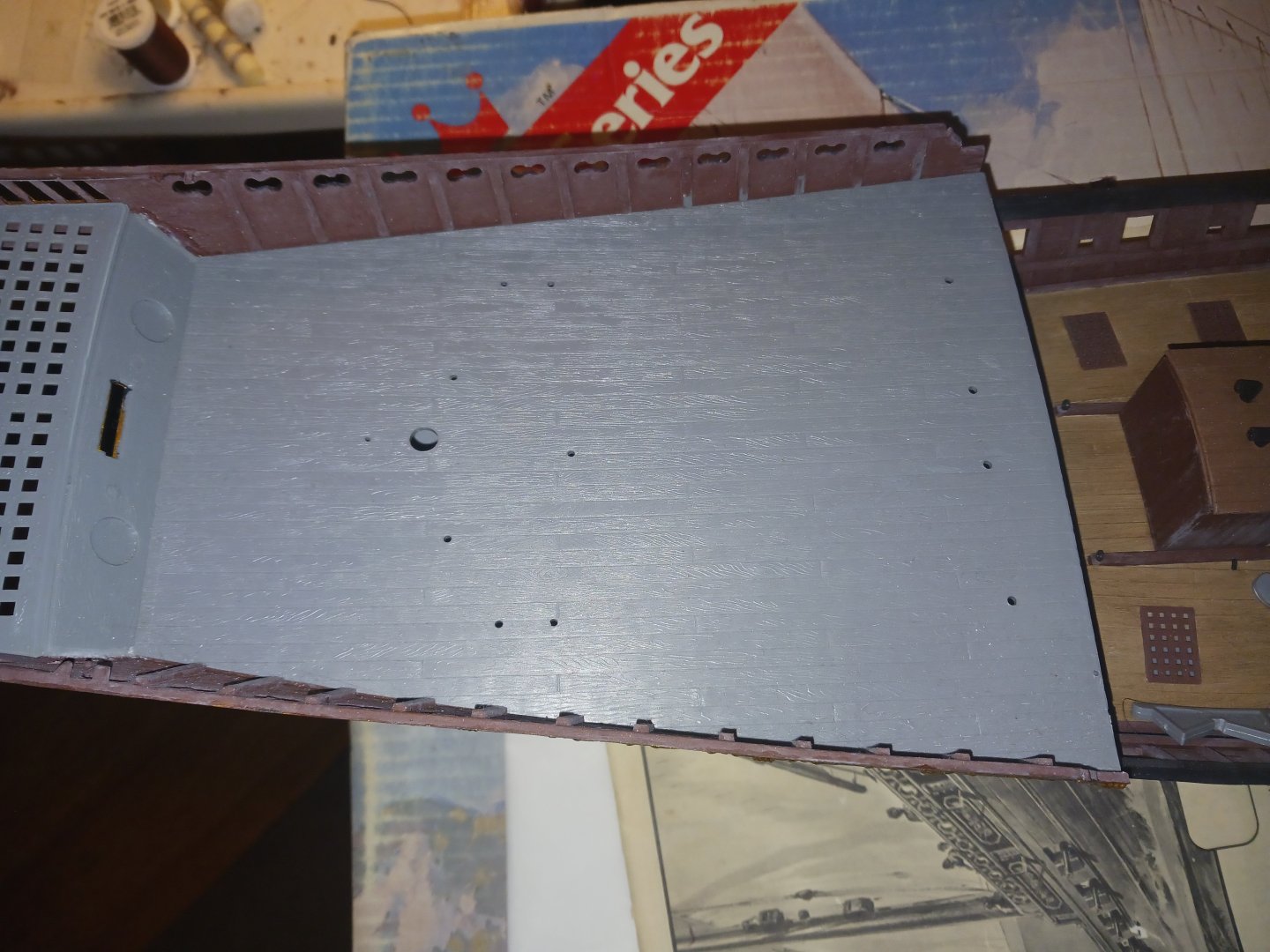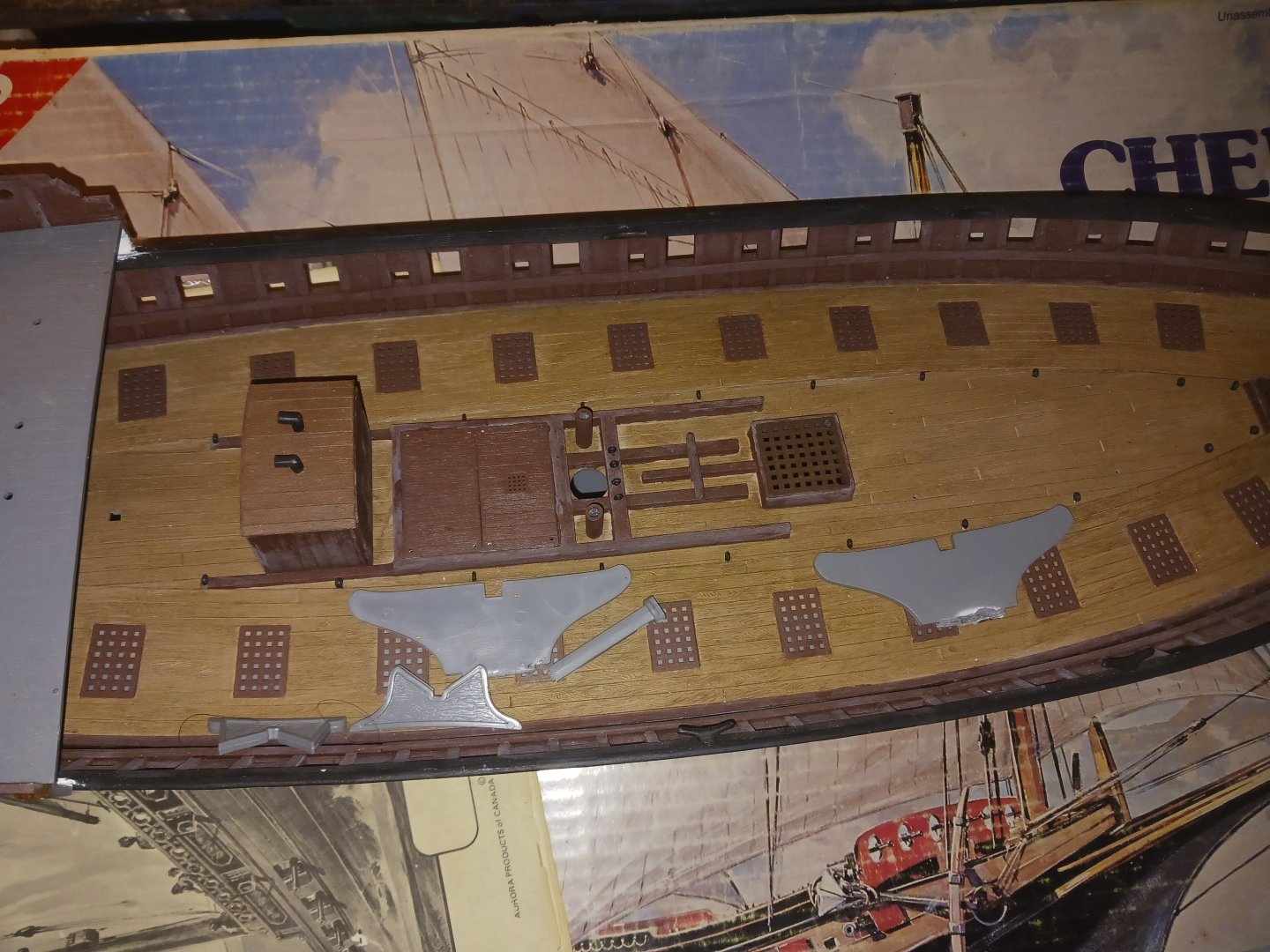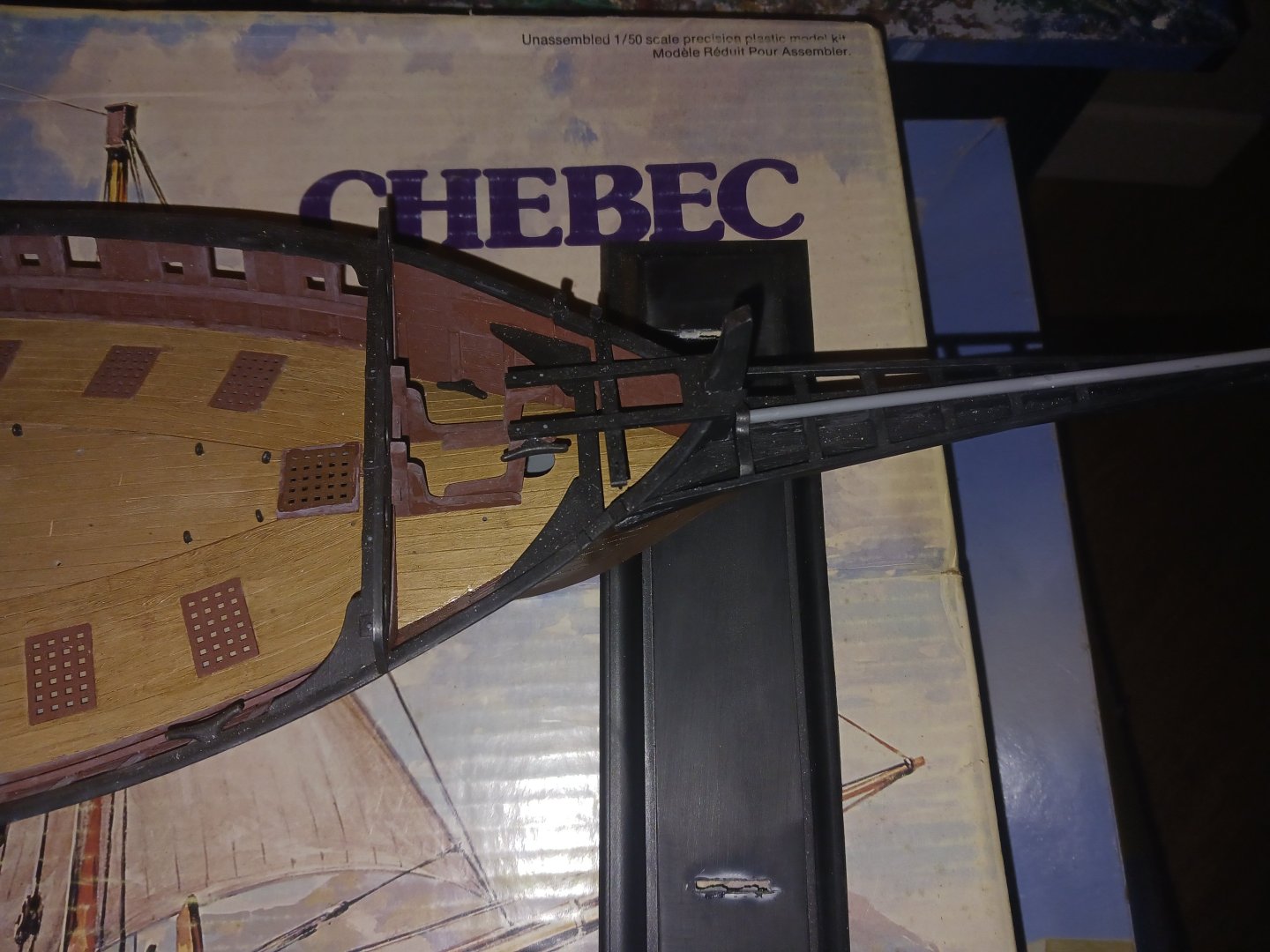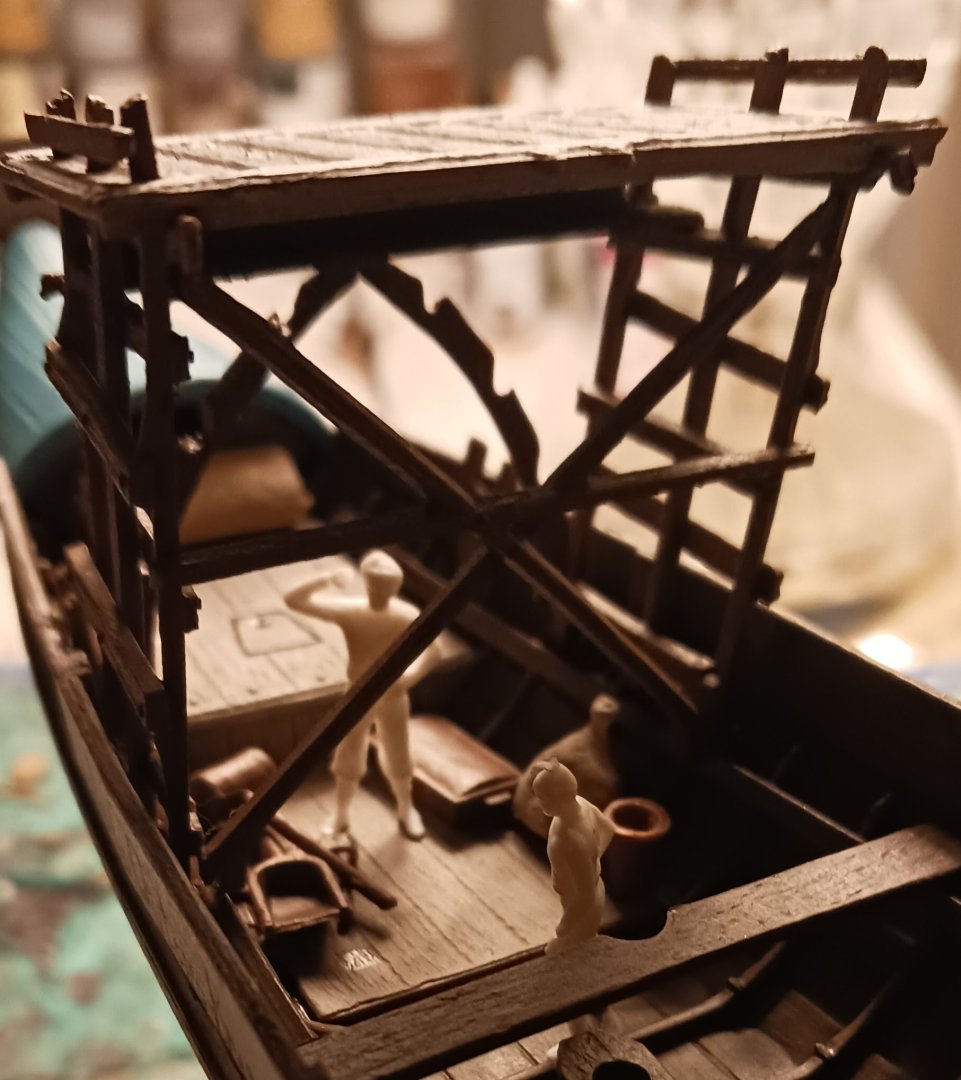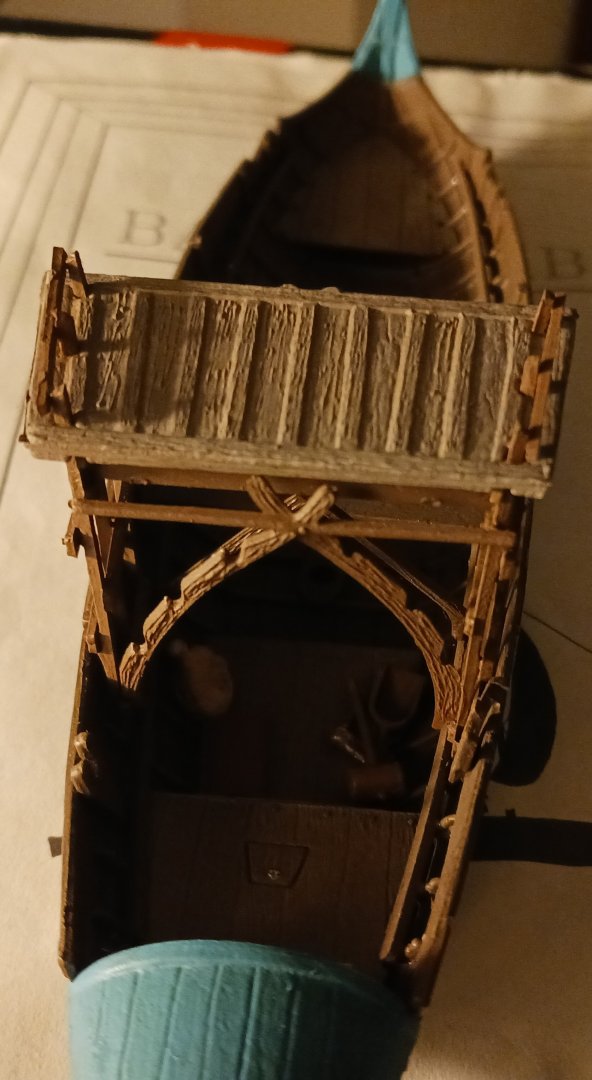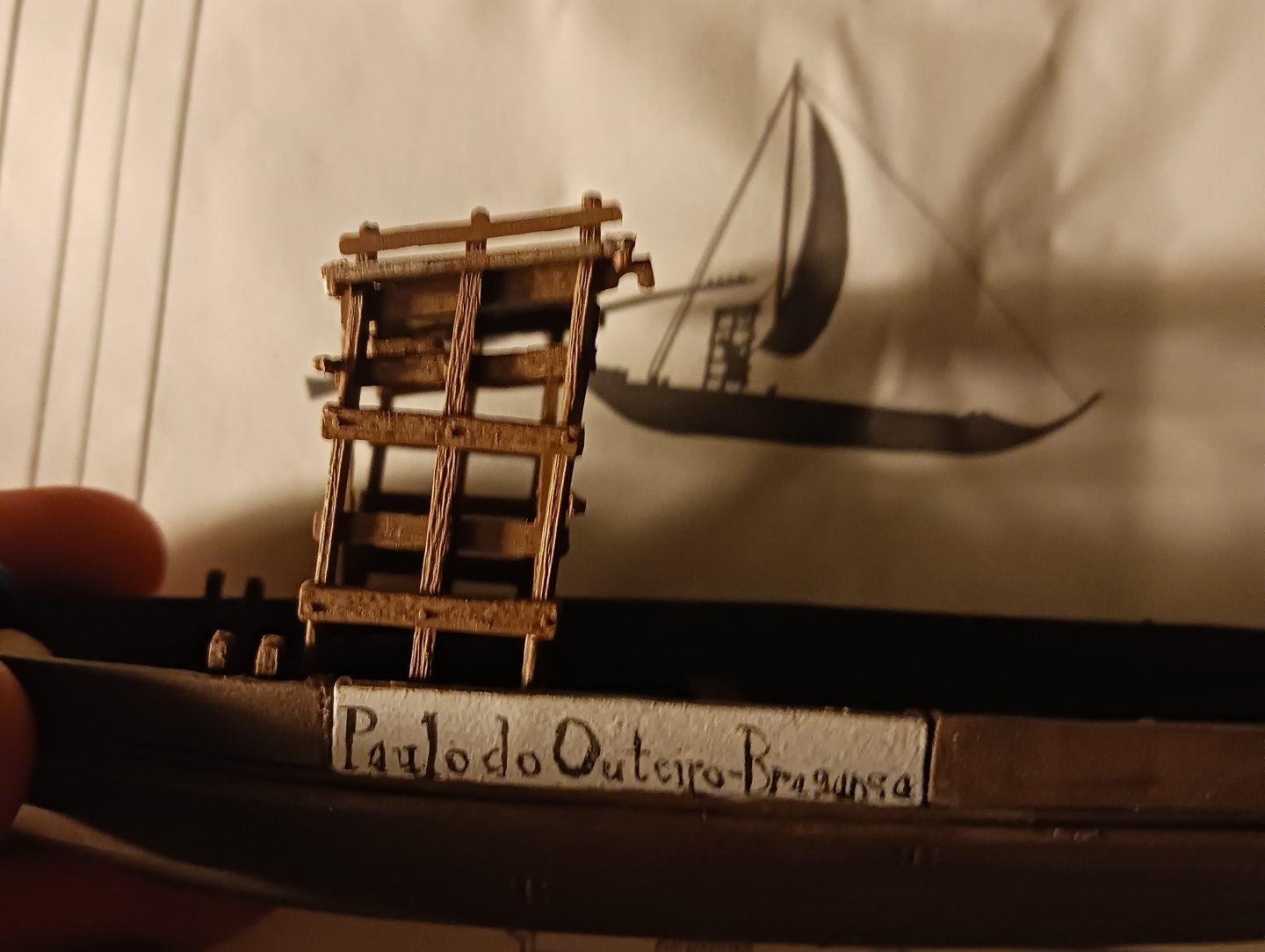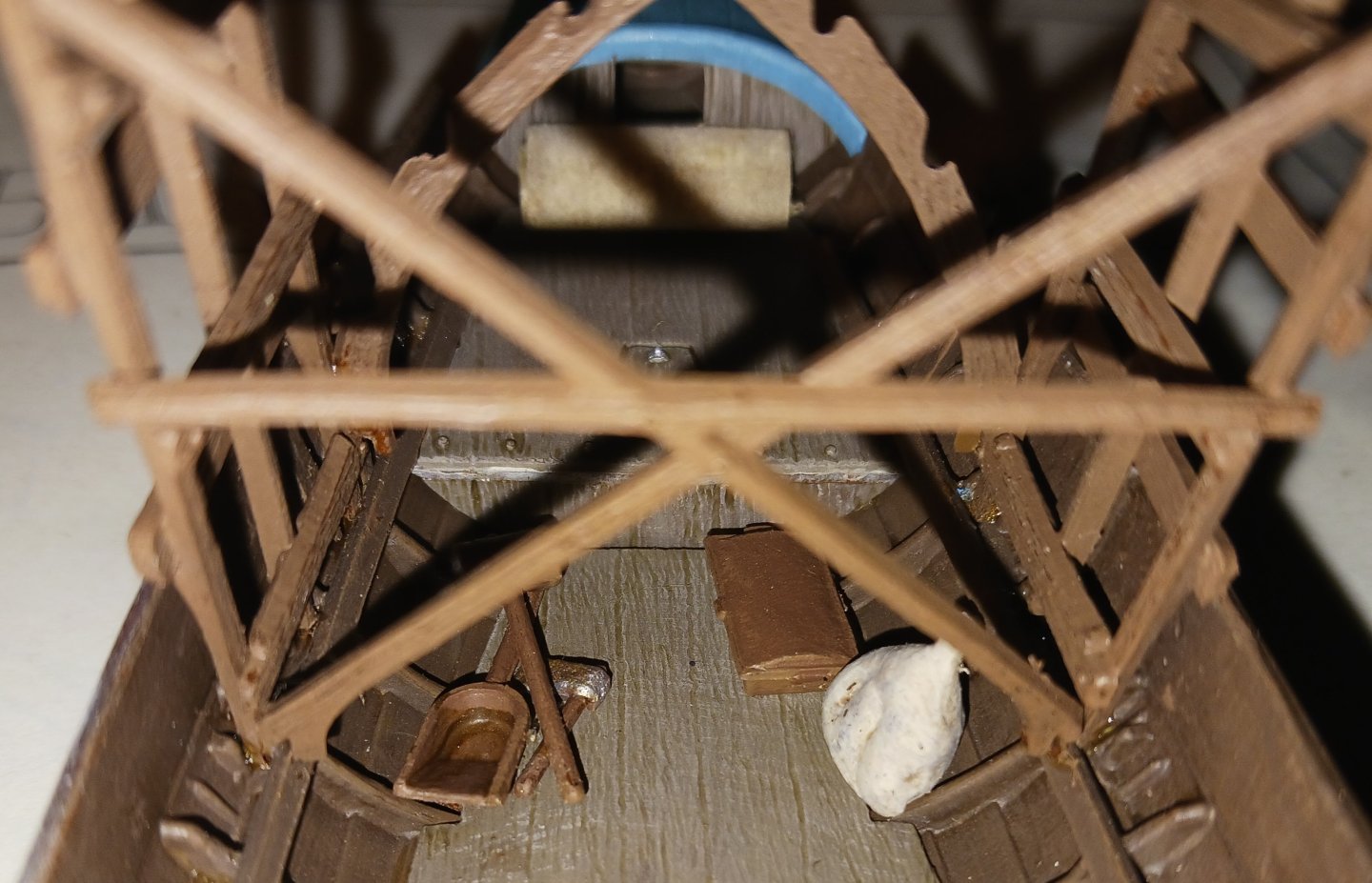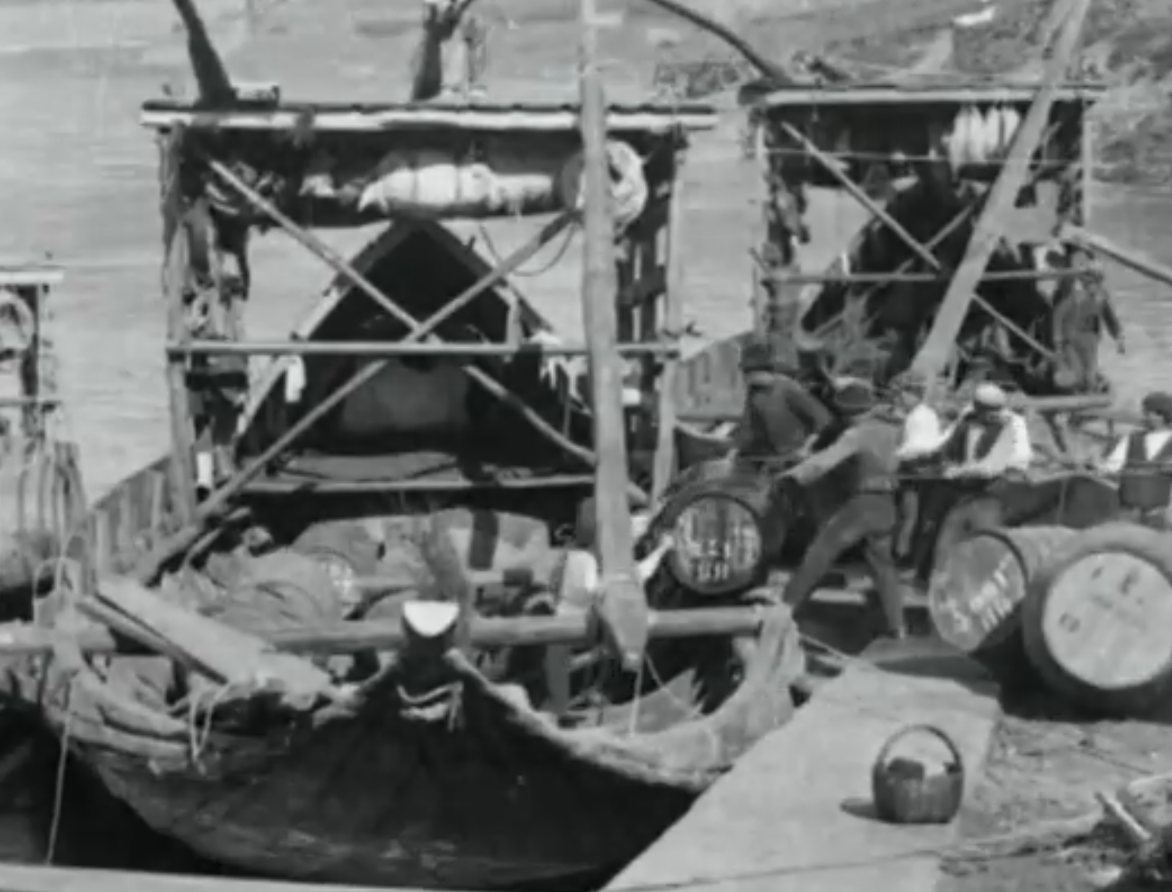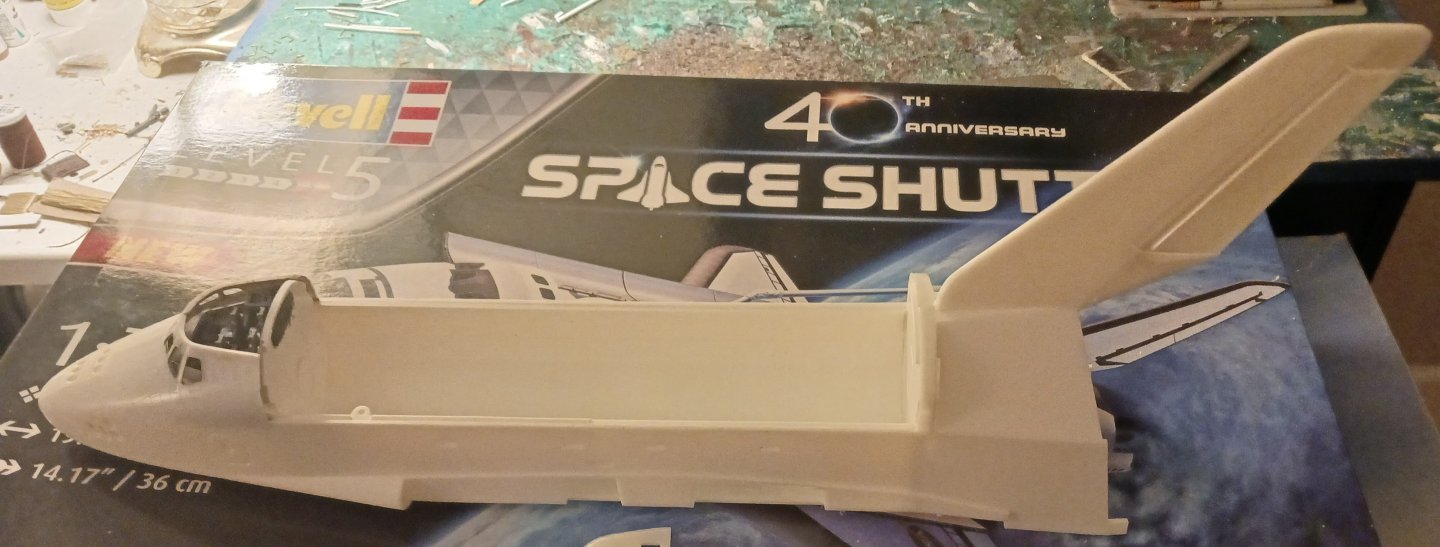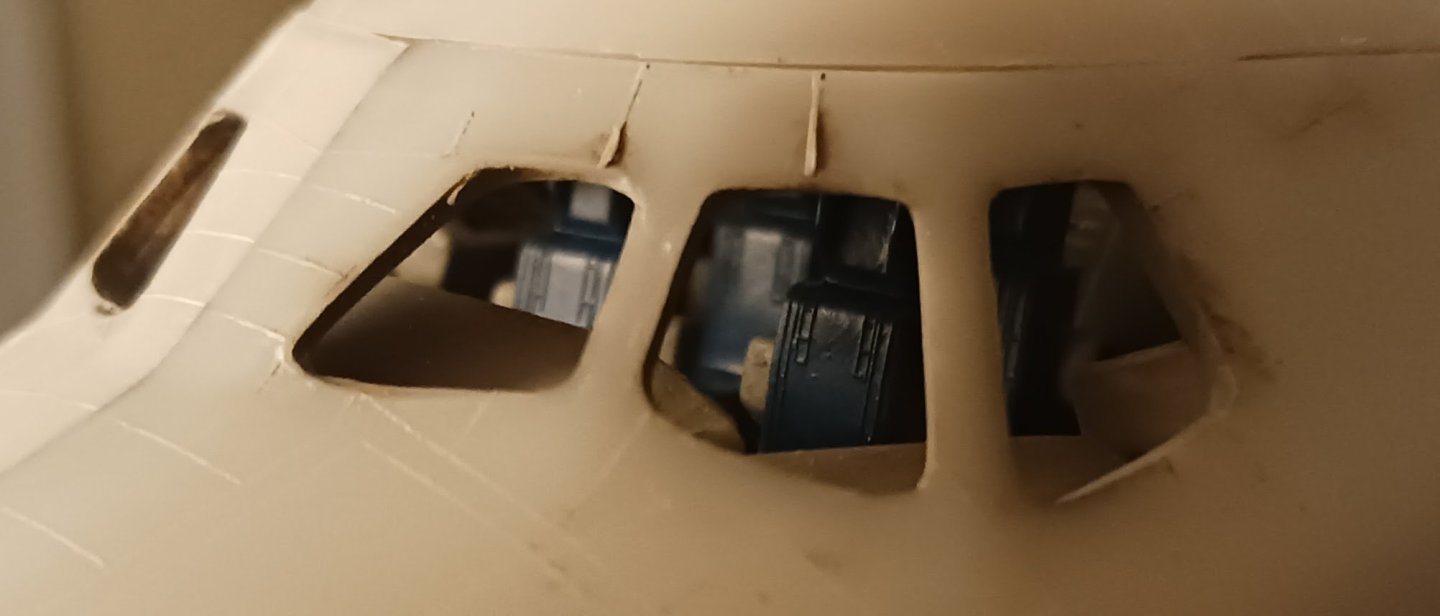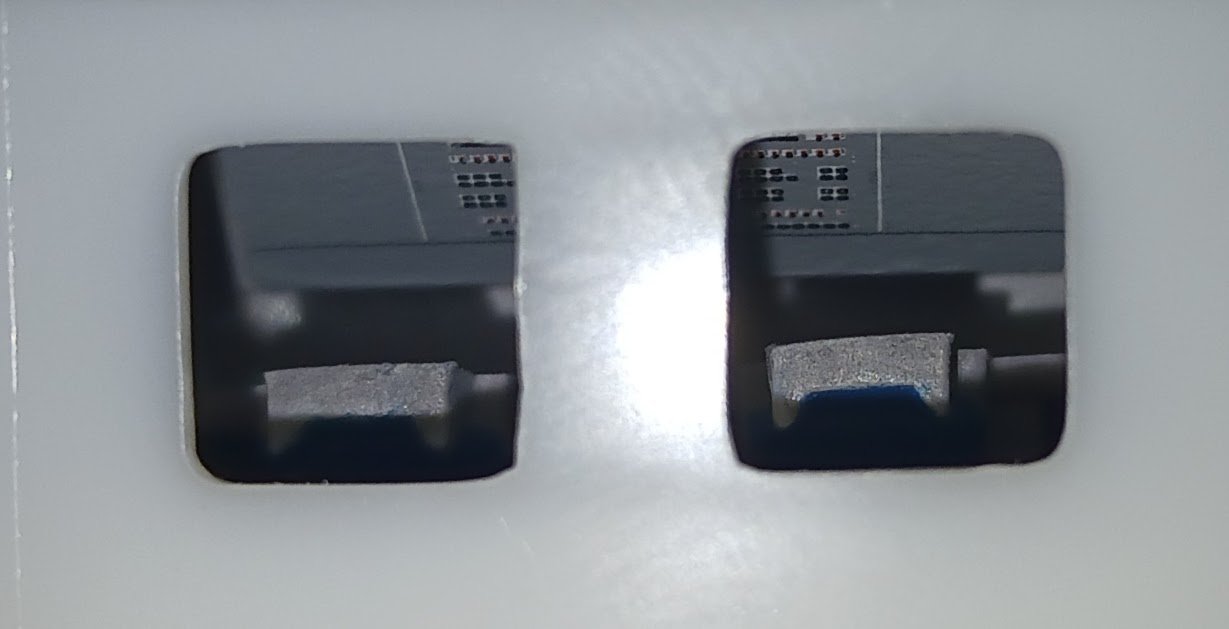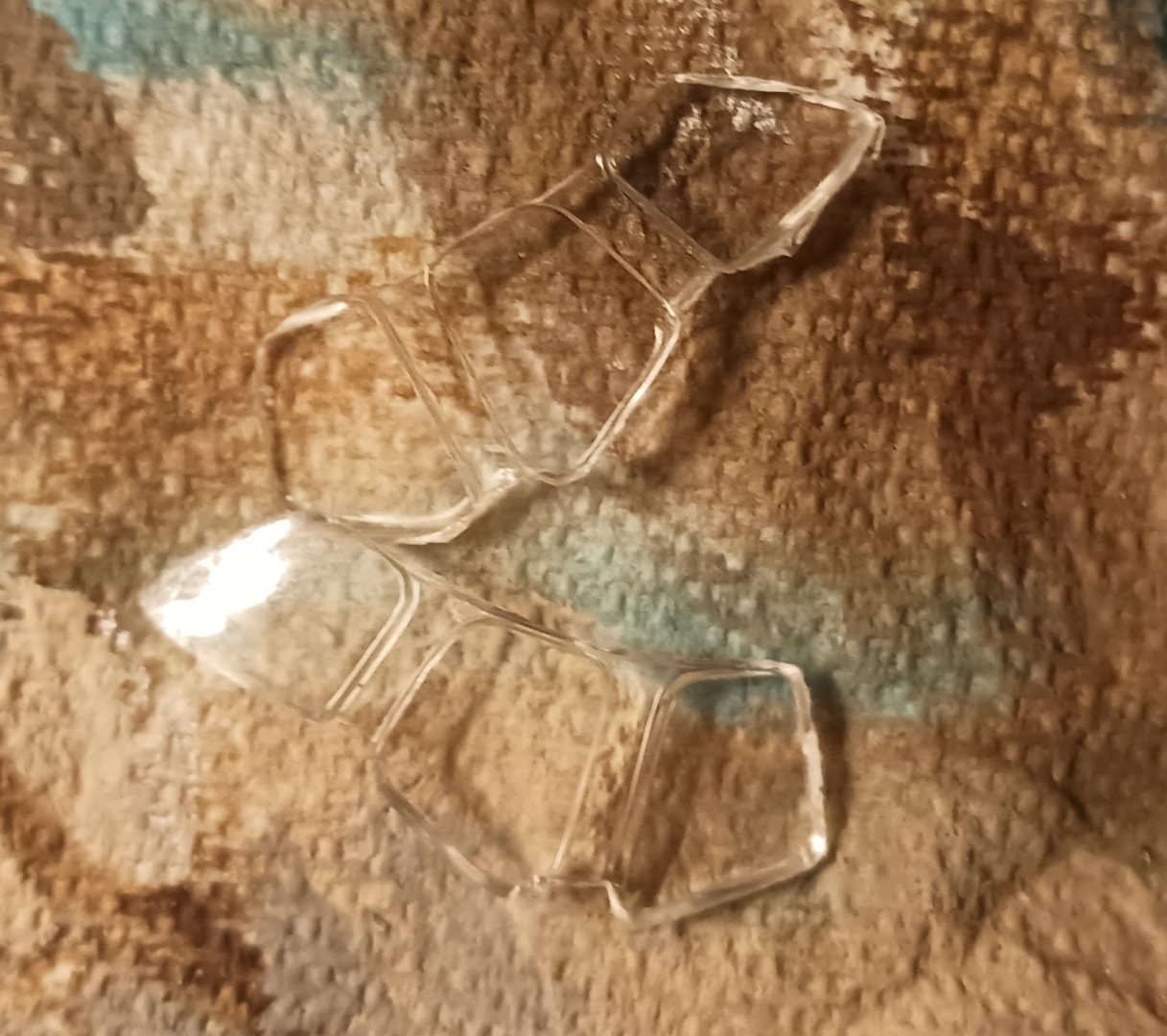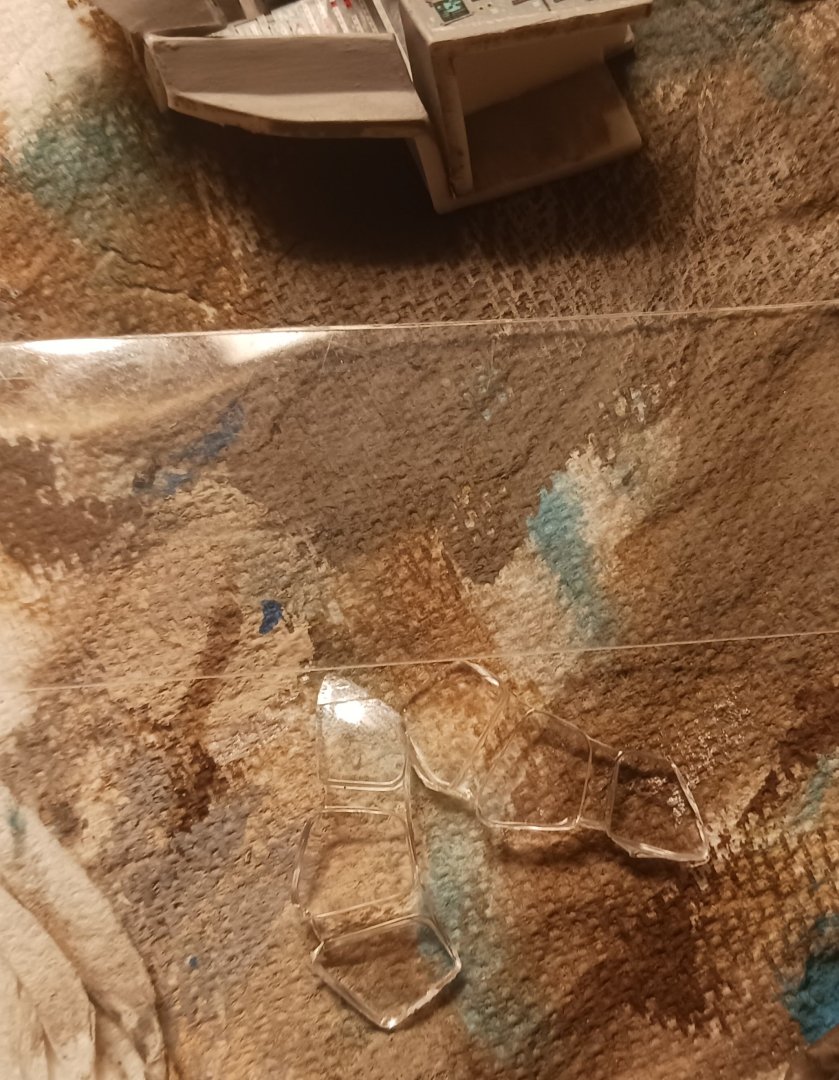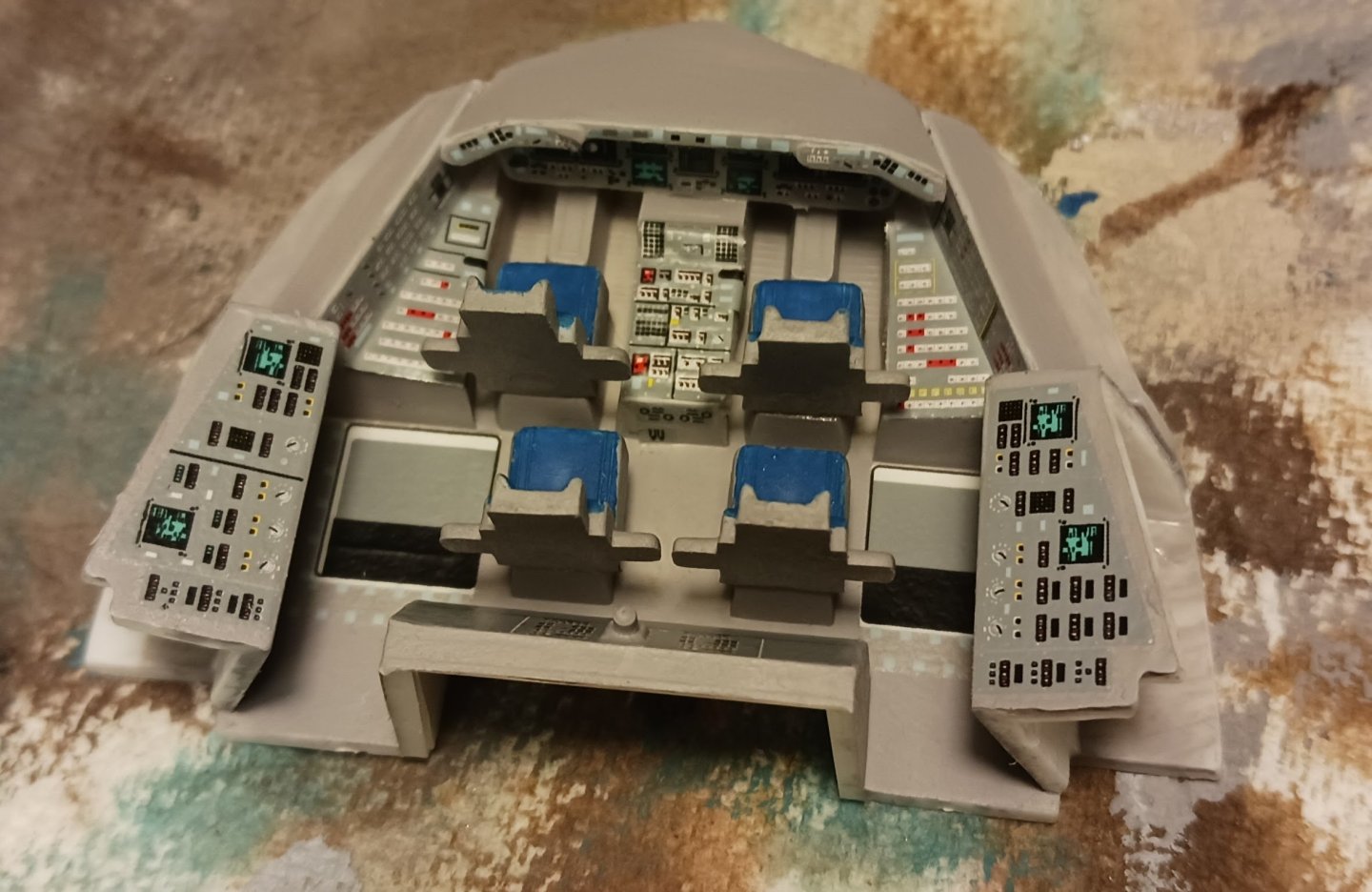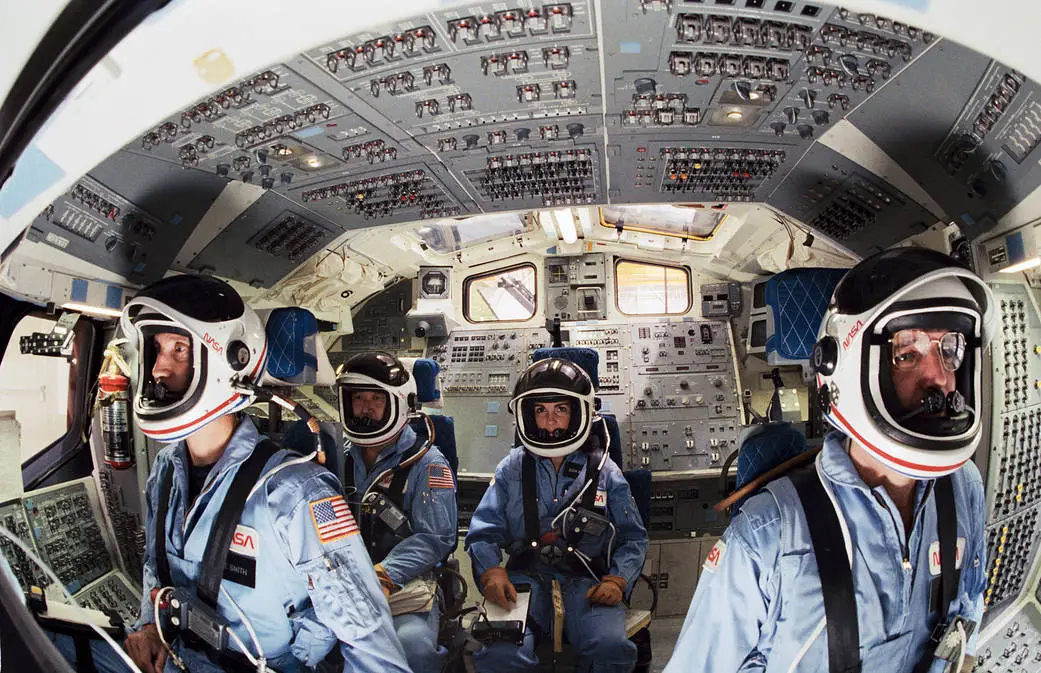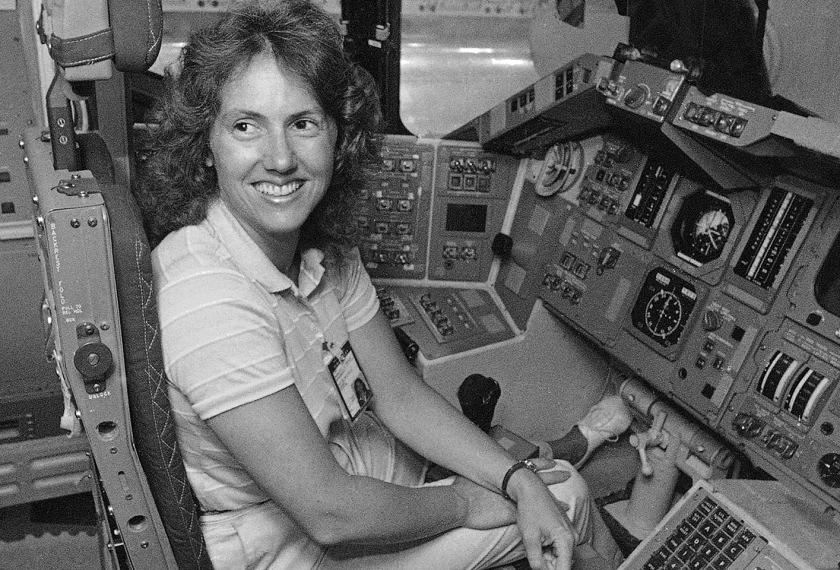-
Posts
1,391 -
Joined
-
Last visited
About Ferrus Manus
- Birthday 07/12/2004
Profile Information
-
Gender
Male
-
Location
California, USA
-
Interests
Sailing ships, all things nautical history, medieval/renaissance history
Recent Profile Visitors
-
Hello Bear, You should check out Steven @Louie da fly's build of the Winchelsea Nef. It has lots of information you could need for your build. With that said, I find it highly likely that a simple clay oven or perhaps a brick oven like the one found on the Mary Rose would have been used to feed the crew. For the thirteenth century, I would say the former would be more likely. I hope this answers your question.
-
 yvesvidal reacted to a post in a topic:
Le Chebec Requin 1751 by Ferrus Manus - Heller - 1/50
yvesvidal reacted to a post in a topic:
Le Chebec Requin 1751 by Ferrus Manus - Heller - 1/50
-
 Javelin reacted to a post in a topic:
Le Chebec Requin 1751 by Ferrus Manus - Heller - 1/50
Javelin reacted to a post in a topic:
Le Chebec Requin 1751 by Ferrus Manus - Heller - 1/50
-
 ccoyle reacted to a post in a topic:
Le Chebec Requin 1751 by Ferrus Manus - Heller - 1/50
ccoyle reacted to a post in a topic:
Le Chebec Requin 1751 by Ferrus Manus - Heller - 1/50
-
I want y'all to know that the Requin lives. I have done some work on the ship and encountered some major frustrations, prompting me to shelve the ship (literally) for half a year. For the past few days I have considered starting a new Requin (from the Imai kit) but then today, I took the Requin out of storage and found that it wouldn't be that hard to dust off the hull, repaint some parts and genuinely turn the ship into what I originally wanted- a museum model. Hence, I am beginning chapter 2 of this story. Here is the Requin now: It needs a bit of cleanup and repainting, but not much else. The whole thing that led me to abandon this project was a large gap between the topsides and the hull, which I have mostly fixed short of paint, and the fact that parts kept falling off, which can be attributed to me using substandard glue.
-
In a long overdue and I assume much awaited update, I have begun work on the apegadas, the large platform that sits above the stern upon which the steersman pilots the boat. I have also made a very interesting observation: The stated scale of 1/75 would make this one of, if not the largest Rabelo boat ever sailed. For that reason, I will be amending the scale to something closer to 1/64. I have stolen some 1/64 scale figures to use as the crew of the boat. This will be my first model to feature a crew, and I already have ideas. Paulo and Miguel argue about the improperly stowed tools and equipment: Some more images of the apegadas: What I have also found is that the crews of the Rabelos had a habit of tying all of their "stuff" to the timbers immediately underneath the apegadas, as shown below: That's easy when the bottom of the platform is at maximum two feet above your head- not ten feet. For that reason, the crew of my Rabelo will have to stow their gear closer to the deck and within reach. That will be the next job.
- 4 replies
-
- barco rabelo
- 1/75
-
(and 2 more)
Tagged with:
-
 Ferrus Manus reacted to a post in a topic:
Naval History On This Day, Any Nation
Ferrus Manus reacted to a post in a topic:
Naval History On This Day, Any Nation
-
 Ferrus Manus reacted to a post in a topic:
Naval History On This Day, Any Nation
Ferrus Manus reacted to a post in a topic:
Naval History On This Day, Any Nation
-
Probably the most difficult and arduous part of the build is now complete. After about a dozen different dry-fits, significant amounts of tweaking and two days, the orbiter halves are glued together. Currently, the roof of the crew cabin is sitting unglued in position. It will be removed for painting. This is what all the reviews said would be the biggest challenge of the entire project, so it should be relatively smooth sailing from here on out. I plan on doing some of the painting of the orbiter before the wings go on.
-
The initial goal was to paint the orbiter prior to assembly, but I think now plans have changed slightly. See, I had initially planned on using Revell's kit-supplied clear parts for the windows of the cockpit. However, upon inspecting the clear parts, I found the kit-supplied clear parts to be the worst quality I have ever seen in my life. Not even the Roden kit I attempted had clear parts this distorted. Honestly, I get that this is an 80's kit, but the fact that they could allow such poor quality to be sold is honestly offensive. Any aircraft with an actual canopy would be rendered unbuildable with this clear plastic quality. I could continue to wire brush Revell, but I decided to make a plan instead. I still have a decent section of clear acetate from a previous model, and I decided that that would be much better than the kit-supplied parts. The plan is to cut apart the Revell parts into the individual windows and trace the outlines on the acetate, leaving a margin around the outside. Then, the acetate windows will be glued to the interior of the window frames. This way, the interior will be at least kind of visible without distracting warpage and distortion of the glass. Real photos show us that the orbiters' windows were not distorted or tinted in any way: More later.
-
Now that I have that out of the way, the next thing on the table is some of the assembly of the Challenger's hull. I will likely do some painting before the assembly, but after that, the flight deck goes in as well as some other things. Here is the orbiter as she appears currently. She will be at least primed prior to assembly, perhaps preshaded as well. I want to do as much of the area surrounding the windows as possible before the windows and flight deck go in. Stay tuned for more!
-
I've now begun to put paint to plastic. First was the orbiter's flight deck, which is admittedly a weak point in the model. This model was originally released with different decals for the earlier orbiters, but when they updated the model for this release, they updated the decals to show later orbiters. Challenger would have had a different flight deck layout. I am not impressed. Luckily, all this will be hidden inside the orbiter, behind the notoriously-low-visibility windows. I think, when Revell updated the kit, they should have included two or three high quality decal sheets with orbiter-specific decals. These decals were thick, chunky and didn't want to go where they were needed. Some of them were even shaped and sized improperly. However, I did what I could with what they gave me. Revell should have also included an extensive photo etch set, which they have done in their modernizations of old ww2-era ship kits. Next will be some of the assembly of the orbiter's fuselage.
-
To begin with this build is the flight deck of the shuttle. I likely will not put an extreme amount of time or effort into the flight deck, as it will be nearly invisible underneath the thick, heat-resistant glass of the cockpit and upper windows. Here is an official Revell image of what the flight deck is meant to look like when complete: And here is a picture of the Challenger's actual flight deck: This photo, taken by NASA, shows four members of the actual STS-51L crew training inside the shuttle. Take note of how cluttered the shuttle's flight deck is. Also take note of how flimsy the seats seem to be. This is for multiple reasons- first being the fact that some of the seats were meant to be stowed while in orbit. Secondly, a Space Shuttle seat is not meant to have all of the equipment that, say, a fighter jet's seat would have. The Shuttle was only meant to experience a maximum of 3 G's at any point in the flight, and the astronaut's emergency life support equipment was carried underneath the seat. In fact, when Challenger's flight deck- or what remained of it- was fished out of the Atlantic Ocean, it was discovered that at least two of the astronauts had activated their personal oxygen supplies, and that Michael Smith, Challenger's pilot, had activated several switches on his control panel in an attempt to restore electrical power to the spacecraft. Christa McAuliffe in the commander's seat, 1985:
-
@amateur having seen the footage and news reports for both disasters numerous times, I think the main contrast is that the Columbia landing was going to be just another shuttle landing, until it wasn't. All there really was was a disintegrating "meteor" in the sky, and the shuttle was never heard from again. Challenger, on the other hand, was being watched by the entire United States. She was being cheered for, saluted, egged on to her flight into orbit. As one commenter said, schools paused their sessions for the day to watch the launch. The entire nation stopped what it was doing to watch Challenger soar into space, and so it seems fitting that Challenger would have made a larger cultural impact.
-
Honestly, I feel a bit old as well. I was born in 2004, right at the beginning of the tail end of the Space Shuttle program- the shuttle returned to flight when I was a year old. After the cancellation of STS, I personally mailed a letter to President Obama asking why his government had shut it down (I was 6 or 7 at the time). He actually got back to me a couple of months later, and in the typical fashion of a politician, danced in circles around the question without giving a response. To date, I still miss the shuttle program.
-
Hello all, I bought Revell's 1/72 scale space shuttle orbiter back in July if this year, and it has been sitting in my closet unbuilt ever since. It's time to finally open it up and start it! I planned initially on building the orbiter as the Columbia, as she would have appeared later in her life. However, as I was doing later research on the kit, I found out that A. all of the space shuttle orbiters had different thermal protection patterns, and B. the only orbiters you could model accurately are Columbia as she would have originally appeared prior to STS-9, and Challenger. So, I chose Challenger. Here's a look at the box: From what I've gathered, the kit shows its age, but with a little effort and skill, can be transformed into an extremely good-looking (although maybe not picture-perfect) representation of the orbiter. So, I am making a few decisions about the model. 1. Just the orbiter will be built. I will not be purchasing the Monogram stack in order to represent the boosters and external fuel tank. That being said, Challenger especially deserves to be modeled as the full stack. 2. Most of the tile work will be a painting exercise. I specialize in ships, not spacecraft, so I will likely build out of the box as much as possible for the sake of not risking the kit. 3. Challenger is the only orbiter whose orbiter-specific markings are not included in the decal sheet. This was a massive oversight by Revell, and I will be purchasing a set of decals for her. Once more, as I have stated in the title, I will be depicting Challenger, quite possibly the second-most legendary spacecraft of all time, only being surpassed by the Saturn V, as she appeared immediately prior to her 73-second flight into the unknown. Wish me luck.
-
I've painted quite a bit of the boat now, including the decks, some parts at the bow and stern, and the boat's very long name: Later, the decks will become crowded with the crew's tools and equipment, so enjoy them now while they're bare. More to come soon.
- 4 replies
-
- barco rabelo
- 1/75
-
(and 2 more)
Tagged with:
-
I began work on the Rabelo by installing the forward oarlocks and putting the removable boards into position. Then, I painted the entire hull. The hull was painted with a mixture of brown and grey, then a brown wash was applied, and afterwards, I dry-brushed the interior of the hull. Here are the results: The manufacturer was kind enough to put the ejector pin marks in places that wouldn't be seen on the completed model.
- 4 replies
-
- barco rabelo
- 1/75
-
(and 2 more)
Tagged with:
-
We need not dredge up the shipwrecks of the Douro- these boats existed in living memory, and some, I assume, still exist in their current form. However, some documentation would be nice. For that reason, I will be ordering a book about the design and function of the Rabelos. In other news, I will be starting the model officially probably tonight. I have the hull off the sprue. It's a very detailed, very beautiful thing, with correct dimensions and wood grain molding on both the interior and the exterior, and markings for the correct alignments of parts. This already sets the model above many others I have built. Here is the diagram on the back of the instruction sheet, which will be very helpful with determining where everything goes: The first order of business will be to clean up the parts and attach the four oarlocks at the fore and aft, and then the eight removable planks that serve to increase the freeboard of the ship. In addition, the fulcrum for the steering oar, the espadella, will be added. Afterwards, the hull will be painted.
- 4 replies
-
- barco rabelo
- 1/75
-
(and 2 more)
Tagged with:
About us
Modelshipworld - Advancing Ship Modeling through Research
SSL Secured
Your security is important for us so this Website is SSL-Secured
NRG Mailing Address
Nautical Research Guild
237 South Lincoln Street
Westmont IL, 60559-1917
Model Ship World ® and the MSW logo are Registered Trademarks, and belong to the Nautical Research Guild (United States Patent and Trademark Office: No. 6,929,264 & No. 6,929,274, registered Dec. 20, 2022)
Helpful Links
About the NRG
If you enjoy building ship models that are historically accurate as well as beautiful, then The Nautical Research Guild (NRG) is just right for you.
The Guild is a non-profit educational organization whose mission is to “Advance Ship Modeling Through Research”. We provide support to our members in their efforts to raise the quality of their model ships.
The Nautical Research Guild has published our world-renowned quarterly magazine, The Nautical Research Journal, since 1955. The pages of the Journal are full of articles by accomplished ship modelers who show you how they create those exquisite details on their models, and by maritime historians who show you the correct details to build. The Journal is available in both print and digital editions. Go to the NRG web site (www.thenrg.org) to download a complimentary digital copy of the Journal. The NRG also publishes plan sets, books and compilations of back issues of the Journal and the former Ships in Scale and Model Ship Builder magazines.


